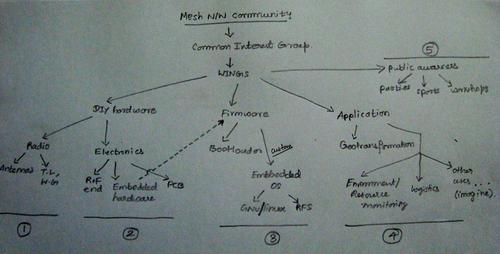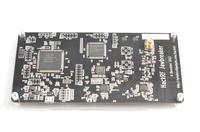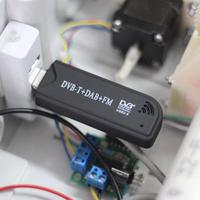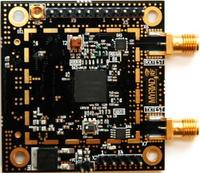4.1 Practical Implementation – Introduction¶
Description : Introduction.
We always love to do, practicing Do it Yourself approach when building things. At the same time we embrace Do Not Repeat Yourself principle for reducing the work load. However, striking a balance between the two is the optimal way to go. So we do things for :
- Experimenting, Discovery, Learning & Sharing
- Lean and Mean in finance and funding (through mutual sharing)
- Learning by Doing & Observing
- Encouraging alternative thinking rather than using conventional, commercial products through reuse, recycle, upcycle
- Fun of hacking stuff
In relation with the Wireless Mesh Networking, there is a lot of opportunities for Doers, Creators, Hackers, Experimenters, Researchers, Students, Hobbyists. There is always something for everybody interested. Take a good look at the following Strategy/Resources diagram and its easier to understand what vertical one can chose to learn, share, or teach with others.
From the diagram :
Radio:
- Antennas Selection, Design & Construction
- Transmission Lines/Wave-Guides Selection
- Connector(RF) Selection
- Impedance Matching Design & Construction
- Link Budgeting
- Link Planning (GIS based survey)
- Soldering
Electronics:
- Transmitter & Receiver (RF Front end)
- Embedded Hardware Design
- Components Selection & Billing
- Designing Schematics & Printed Circuit Board (using Free software tools)
- Soldering
- Reading Data sheets, & Understanding associated functionality
Firmware & Operating System ( chances :) )
- Free software based boot loader programming
- Free software based kernel (GNU/Linux kernel)
- Device driver programming (if new hardware is designed)
- Kernel module programming (if new hardware is designed, new protocol is designed)
- Building & Compiling Embedded Free Operating System (using embedded linux built systems)
Applications ( scholl down to know more )
- Anything concept to be implemented and compatible with Mesh & Distributed nature
- Mesh Network Management, Visualization & Geo-transformation applications
Non-Technical ( important one :) )
- Documentation
- Designing – Logos, Posters, Comics, etc…
- Tutorial writing
- Licensing
- Exploring/Monitoring – Local & International policies, laws, community actions….
With the verticals and opportunities listed above, now we shall move to “practical” things that the individual or community could do. Since the common goal is to build a Wireless Mesh Network, one has to understand its design goals from its technical architecture point of view.
4.2 Practical Implementation – Physical Layer¶
Description : Practical Implementation on Physical layer….
Physical Layer :¶
Physical layer of Wireless Mesh Network deals with electromagnetism, antenna, cabling, signaling, electronics stuff and the designs/protocols related with it. However, for a practical discourse journey, we shall look and observe the system from Antennas to Electronics constituting the physical layer in a mesh node.
Antenna + Transmission Lines + Connectors :¶
A symbiotic convergence between the resources and design must be reached in “practical” learning. Here we will often refer to tutorials of design of antennas and other things related with it. Designing is one thing about antennas, but scavenging for tools & materials required for making one is completely another radical animal which pushes the individual and community to move out from their computer/laptop monitors to hardware shops, and second hand scavenging from home garbage, garages, work bench stashes, radio shacks, old racks, friends & neighbors homes…….a good and interesting thing….. isn’t it ???
So First, one has to understand the Antenna design requirements, goals, & practical trade-offs in terms of Wireless Mesh Network – Node:
Requirements (situation based)¶
- Highly directional antenna is required to connect to establish a point to point connection between two nodes.
- Sector setup for covering a certain view angle – (range) to establish a point to multipoint connection between nodes.
- Omni directional antenna is required for serving the mesh agnostic clients in all directions horizontally.
Goals¶
- Eliminate or minimize Multipath propagation & fading in antenna design selection
- Economic by design & construction
- Encourage designs that doesn’t require RF amplifiers
- Portable / Modular design & construction
- Plug & Play connectivity for effective portability and ease of usage
Reuse – Materials :¶
When it comes to Antenna design and construction, designs could be learned from internet, books and other friends. Doing an antenna really takes a physical collaborative approach to mutually share knowledge and physical tools and resources necessary to building, testing, trial & error, sometimes breaking stuff too… :)..
- Shirt/Coat hangers
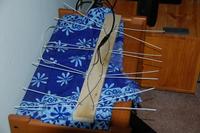
- Bicycle/Motor bike Spokes
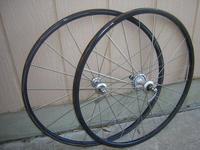
- Old Retractable antennas
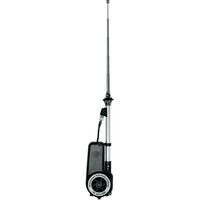
- Old Yagi-Uda Antenna
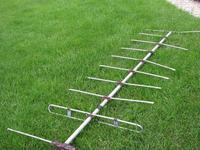
- Condenser Copper Tubes and Fins

- DC Fan grill from Desktop PC’s
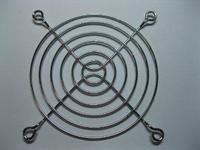
- Table Top fan Grill

- Old Umbrella Structure
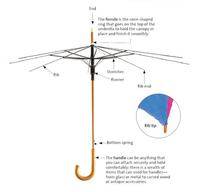
- Used/Old Automobile Sharkee
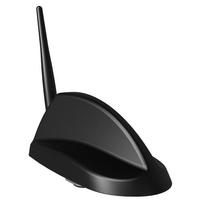
- Used/Old/Broken Retractable Measurement Tape

- Reuse Collapsible Sieve

Tutorials:¶
We recommend you to further carry on the learning by studying and doing the antennas by yourself and take necessary help with the community and don’t forget to follow mechanical and electrical safety rules to follow
Link Budgeting :¶
Radio Planning :¶
Devices :¶
For now we are following the Free/Open implementations of Radios, Routers, & other DIY Hardware devices which we believe will leverage the Radio Hardware devices as Home brewing done for Amateur Radio & recent fountain of DIY Free Hardware Movement.
4.3 Practical Implementation – DataLink Layer¶
Description : Practical Implementation – on how Node connectivity is achieved at Hardware Interface level & possibly Routing at the same level.
4.4 Practical Implementation – Transport Layer¶
Description : Practical Implementation guide about Transport Layer
4.5 Practical Implementation – Network Layer¶
Description : Practical implementation on Wireless Mesh Networking – abstract identification & Routing at higher level
4.6 Practical Implementation – Application Layer¶
Description : Practical implementation guide for application layer
Services & Applications to Test for Mesh Compatibility :¶
There are many services and tools available in the present day internet, which can easily work with Mesh Network. Most of them are distributed in their DNA. While some are tailored to design with Mesh network and distributed nature. Forth coming applications/services in near future are developed with Mesh and Distribution as aspiring properties of it.
The Services/Applications which we have to Test for Mesh & Distribution compatibility are :
To Test :¶
- WIKI – Wikipedia/Dokuwiki
- Yacy – Distributed Search Engine
- Media Publishing – Mediagoblin, Piwik, Book Type
- Community Radio, PodCasting – AirTime, IceCast
- Journalism – Journlism ++, LiveBlog
- File Sharing – Open Torrents, IPFS, GNU-Net
- Web building – ZeroNet
- Social Networking (Chat, Share….) – Retroshare, Movim
- Discussion, Polls, Organization – Crabgrass, Discuss
- Games – Open Arena, 0.A.D, PyChess
- ServalMesh
- Qual.net
- Ind.ie
- Tox
- Tor
- Zeronet
To Create:¶
- Local voice call and messaging applications
- Map based GIS applications – distributed SRTM data for topography
- Distributed Stellarium (i-Telescope) – with telescopes mounted in each individual house / Schools / Colleges
- SatNogs – with Antenna in each individual house for Radio Amateur – Schools / Colleges
- Distributed Spectroscopy – with spectrometers in each individual house / Schools / Colleges
- Logistics & Transportation application for managing City/Town/Village public vehicle transportation, tracking
- Environment monitoring – Radiation, Air quality, River quality, Soil quality
- Public Survey applications
- Distributed democratic e-governance engine
4.7 Practical Implementation – Security Practices¶
Description : Practical implementation guide in Wireless Mesh Security Practices
4.8 Open Data & Content¶
Description : Data and Content that can be served openly with and without mesh network. However with Mesh Networking the reach, distribution, and penetration of the the Open Data and Content will be wider and deeper depending upon the practical network implementation and coverage.
There is always the persistent presence of Free(dom) in data – Open Data that are transparently acquired and are distributed right from the initial boot of Internet. Still many of the communities, Institutions, Organizations host and serve the data and content in freely accessible and affordable way to every men in the planet.
Category :¶
The Data or Content can be classified as follows :
Collaborative Knowledge Management :¶
- Wikipedia
Open Course Wares :¶
- MIT OCW
- NPTEL
- NCERT
Open Scientific Data :¶
- NASA – SRTM data – GIS
- California Wolf center – Realtime Acoustics
- Physio Net – Physiological data
- USGS – Spectral data
- UCI ML – Knowledge Discovery Database
- Bioinformatics Data – 3D molecular data
|
To lessen the workload, it’s excellent to learn that you adopt a “Do It Yourself” attitude and adhere to the “Do Not Repeat Yourself” guideline. Just like www.qedge.co, we also follow these rules. |
|
|
Players will return to the icy Freddy Fazbear’s Pizza universe in the horror game fnaf security breach which promises to deliver a unique, terrible experience. |
|
|
By following these principles, I successfully deployed a wireless mesh network in my community Suika Game |
|
|
Sure, this is a summary of the practical implementation of the ultimate wireless mesh network Retro Bowl Unblocked 76 |
|
